Papillomas are common in modern society. According to medical statistics, they are observed in one form or another in 80% of people and are benign small tumor-like structures on the skin and mucous membranes of various parts of the body. They are just one of the manifestations of human papillomavirus (HPV) infection, the strains of which include more than 190 species. Viruses with a high, medium and low oncogenic risk are distinguished among them. Therefore, in addition to an aesthetic disadvantage, papillomas can pose a serious threat to human life and health, as some of them can turn into malignant tumors.
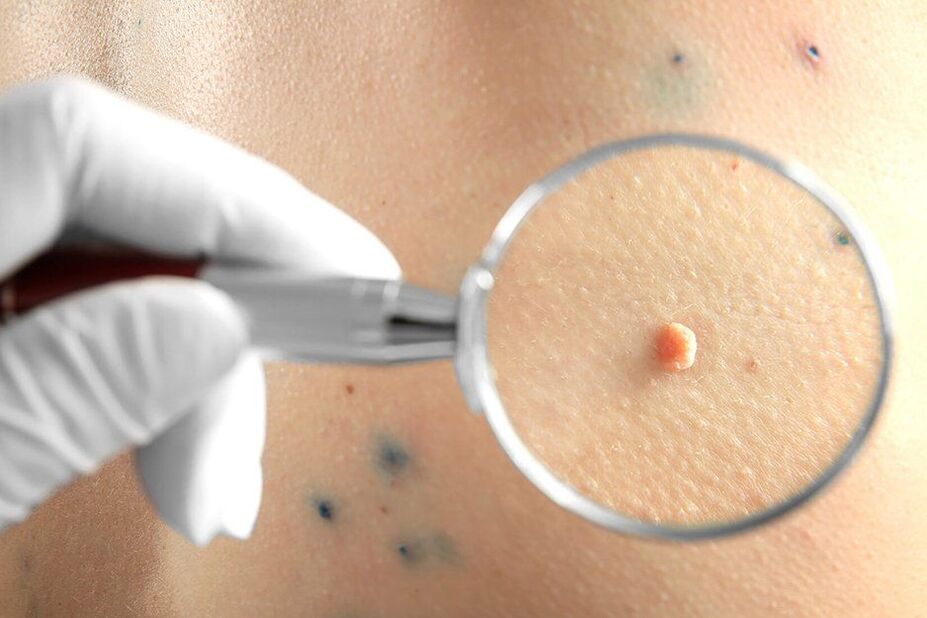
What is HPV
Human papillomavirus only infects humans and its main route of transmission is sexual. Therefore, HPV is most common in sexually active people. This explains the fact that the infection most often appears at a young age, at the time of the onset of sexual activity and at the peak, that is, 15-25 years. In addition, several strains of HPV (types) can coexist in the human body and provoke the appearance of various types of tumor-like formations on the skin and mucous membranes.
The disease caused by HPV is called papillomatosis.
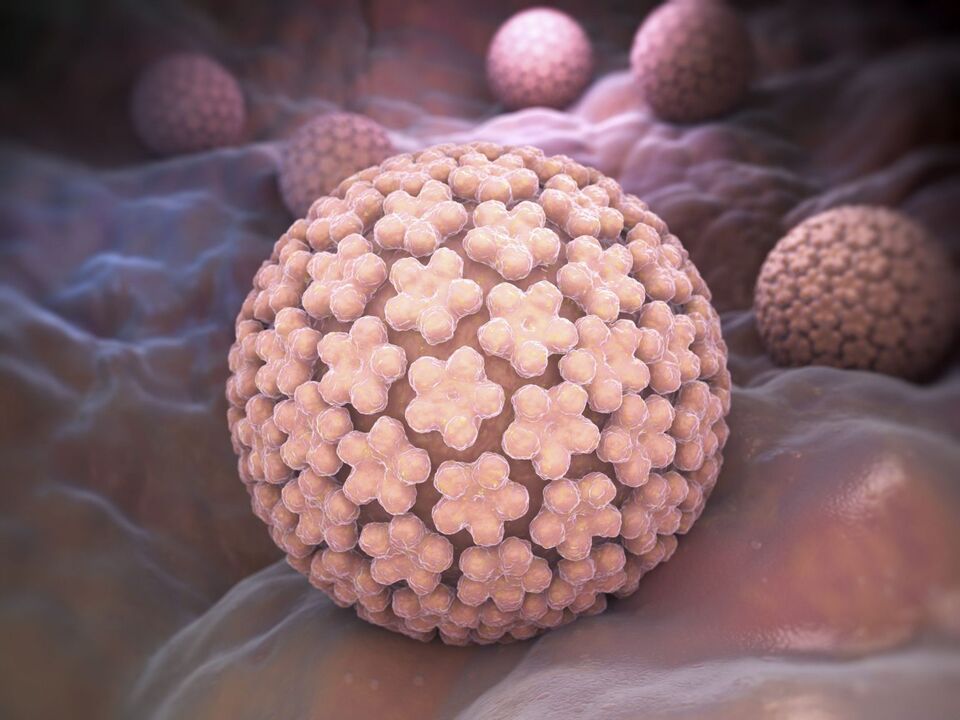
Infection with the virus occurs when it comes to the skin or mucous membranes of an infected person with particles from shed skin or mucous membranes. They attach themselves to the membranes of immature epithelial cells, from where they penetrate the cell's cytoplasm and then into the nucleus. The nucleus of the cell contains DNA that damages HPV. As a result, when the affected cell divides, new cells that are not healthy are formed, which, however, already have altered genetic information, which leads to disorders in the mechanism of their reproduction and differentiation. This becomes the reason for the appearance of neoplasms on the skin and mucous membranes.
HPV infection can lead not only to the formation of papillomas, but also warts and flat and genital warts. However, it can be asymptomatic. In this case, the patient shows no external signs of infection with the human papillomavirus, but acts as a vector and can infect others during unprotected sexual intercourse or at home.
Therefore, HPV infection does not always lead to the formation of papillomas. It depends on the strength of the person's immunity, but more often the first small papillomas appear 1-6 months after infection.
Human papillomavirus is intracellular. Therefore, with a sufficient strength of the immune system, the body successfully suppresses its activity and does not provide an opportunity to provoke cell proliferation. However, with a weakening of immunity due to the action of certain factors, the body's defenses decrease, the virus is activated, which leads to the formation of papillomas.
All strains or types of HPV can be divided into 4 groups:
- non-oncogenic - strains 1-5, 63;
- low oncogenic risk - strains 6, 11, 40, 42-44, 54, 61, 70, 72, 81;
- medium oncogenic risk - strains 26, 31, 33, 35, 51-53, 58, 66;
- high oncogenic risk - strains 16, 18, 39, 45, 56, 59, 68, 73, 82 (types 16 and 18 are considered the most dangerous).
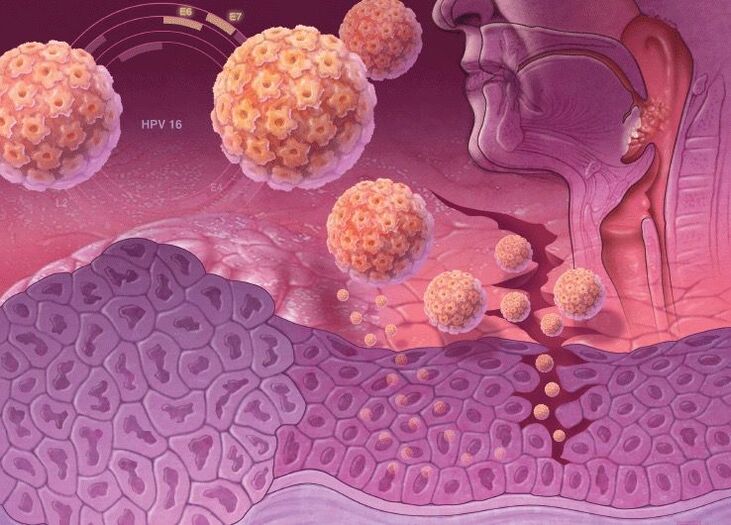
Strains of HPV with high oncogenic risk have special genes in their DNA that are responsible for the synthesis of certain proteins, oncoproteins (E6 and E7). Therefore, when it is incorporated into the DNA of a human cell, its anti-cancer protection decreases. Oncoproteins destabilize the genome of the skin cell, provoke their active reproduction and suppress the ability to differentiate. Therefore, if there is an infection with human papillomavirus strains with a high risk of oncogenic diseases, there is a high risk of developing cancer.
The extent of the danger posed by papillomas depends directly on the type of HPV. Infection with high risk oncogenic strains is dangerous for development:
- Cervical cancer;
- malignant tumors of the anus, vulva, penis;
- oropharyngeal cancer, etc.
70% of cervical cancer cases are due to infection with HPV types 16 and 18.

But even with an infection with strains with a low oncogenic risk and the formation of papillomas, these should be treated carefully. Convex neoplasms are often injured by clothing, bleed, and are prone to inflammation. At the same time, formations on the genitals bring, perhaps, the greatest discomfort, causing severe discomfort and making it difficult to lead an intimate life. In such cases, it is possible to apply a secondary infection, which can lead to the development of purulent-septic complications. In addition, papillomas can form on the mucous membranes of almost all internal organs, which leads to a disruption of their work. For example, upper respiratory papillomatosis is often found, causing difficulty breathing.
Causes of the formation of papillomas and risk factors
HPV can be transmitted both sexually and from an infected mother to her baby during childbirth. The contact-household transmission route of the virus is not excluded, i. e. when towels, clothes etc. are shared. This explains the high prevalence of HPV in the world. Self-infection is also possible. In this case, if a papilloma is injured, the virus can be transmitted to and affect healthy areas of the skin.
The main causes of HPV infection are frequent sexual changes and unprotected sex.

However, infection with a virus does not always lead to the formation of papillomas, genital warts, etc. The likelihood of developing papillomatosis depends on several factors:
- Immunodeficiency of any origin, including the use of drugs that suppress immunity (immunosuppressants, cytostatics, etc. ), the presence of HIV infection, radiation damage;
- Decrease in the body's defenses against the background of physiological changes during pregnancy;
- early onset of sexual activity when the immune system is not yet fully developed and strengthened;
- Microtrauma of the skin and mucous membranes;
- Infection with strongly oncogenic strains of HPV;
- the simultaneous presence of several types of HPV in the body;
- the presence of other sexually transmitted diseases (STDs), particularly gonorrhea, trichomoniasis, herpes, cytomegalovirus infection, Epstein-Barr virus, hepatitis B and C, etc. ;
- hormonal disorders;
- Exhaustion of the body, hypovitaminosis, chronic fatigue and severe stress;
- Multiple births and abortions;
- the presence of severe chronic diseases, particularly diabetes mellitus;
- lead an unhealthy lifestyle, the presence of bad habits;
- bad living conditions.
Elderly and overweight people are more prone to papillomas forming. In addition, their neoplasms often form in the folds of the skin, which contributes to their injury and inflammation.
Types and Symptoms
Neoplasms caused by HPV infection can form on the skin and mucous membranes of various parts of the body, including the face, neck, and cleavage. They can also form on the arms, legs, back, genitals including the perineum, labia minora and large, vulva, vagina, cervix, penis, especially along the coronary groove and frenulum. Damage to the mucous membrane of the oral cavity, the tongue, the nasopharynx, the esophagus, the bladder, the conjunctiva of the eye, the trachea and other internal organs cannot be ruled out.
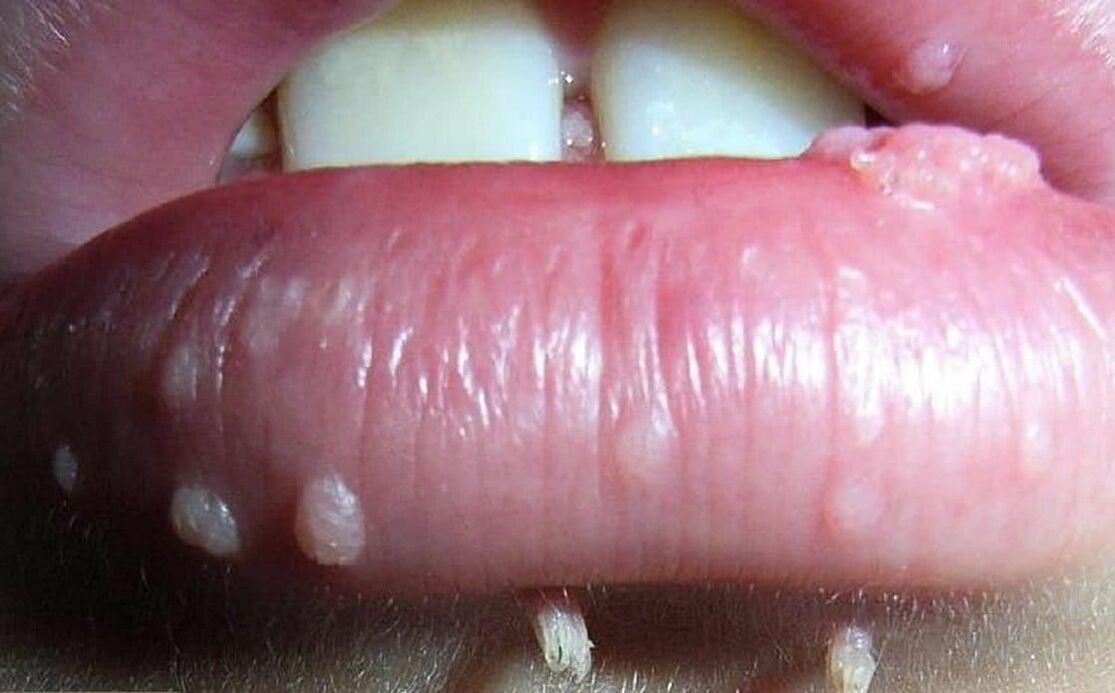
The human papillomavirus can lead to the appearance of other types of neoplasms. In general, they can be divided into 3 groups, although the reason for their occurrence is the same in all cases - infection with the human papillomavirus.
- Papillomas are benign neoplasms of pink, white, pearl, or light brown color that most commonly form on the eyelids, lips, chest, armpits, and neck. They are alone and, as a rule, do not tend to merge even with multiple lesions. Papillomas are usually round or bumpy, resemble the head of cauliflower, more often have a leg.
- Warts are benign formations of a dirty brown or lighter color in the shape of a cock's comb or a series of villi connected by a common base. They are most commonly found in the genital area, anus, and around the mouth. They tend to fuse together, thereby covering large areas of the body. Their occurrence is due to an infection with HPV types 6 and 11. Differentiate between pointed, flat, and intraepithelial warts.
- Warts are uneven, light, benign tumor-like structures in the form of a plaque or a small nodule on the surface of the skin of the hands, on the nails, feet, on the face and on the front of the body. Warts may look like papillomas, but they differ from them in a broad basis. They usually occur with HPV infections of types 1-5, 7-10, 12, 14, 15, 17, 19-24.
Such tumor-like structures can vary in size from a few millimeters to large growths that cover large areas of the skin or mucous membranes.
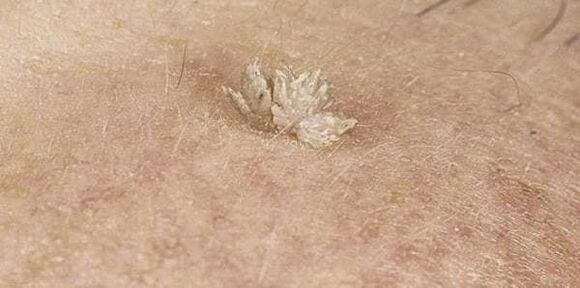
Neoplasms can also differ in appearance, which is directly related to the type of HPV that has entered the body. More common than others there are:
- Vulgar or common - bulges of dense consistency, more than 1 mm in diameter. They tend to merge and group.
- Plantar warts rise above the surface of the skin, often painful bumps with a shiny surface and edge. A distinctive feature is the lack of a skin pattern. Their formation is provoked by HPV types 1, 2, 4.
- Flat papillomas are soft, smooth, flat, usually rounded growths that are a normal skin color or slightly yellowish, pink. They can be itchy, so they are often injured, painful, and inflamed. The cause of their formation are the HPV strains 3 and 10.
- Filiforms (acrochords) are one of the most common papillomas, especially in the elderly. Most often on the face, around the eyes, in the groin, in the armpits, on the neck. They are yellowish in color and tend to gradually grow and turn into bumps with a dense but elastic consistency.
- Genital warts in the perineum, genitals.
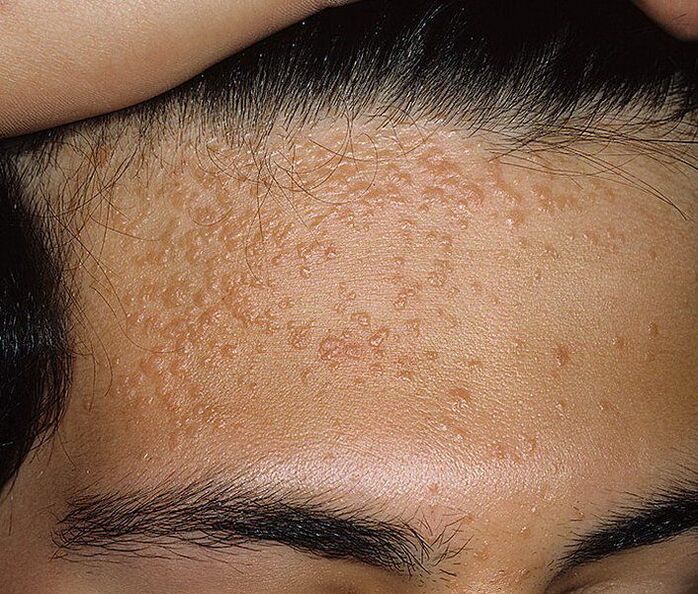
Papillomas can be visible to the naked eye, or they can be located in the thickness of the skin or mucous membranes. In the latter case, they are called endophytic, and one of their manifestations is cervical dysplasia. The defeat of the female internal genital organs due to papillomatosis can indicate the following:
- Itching, burning, crying in the perineum;
- severe leucorrhea;
- bloody discharge, especially after intercourse;
- Discomfort during intimacy.
Sometimes papillomatosis can cause back and pelvic pain, weakness, swelling of the legs, and unnecessary weight loss. Such signs are among the most alarming, as they can indicate the development of complications from HPV infection.
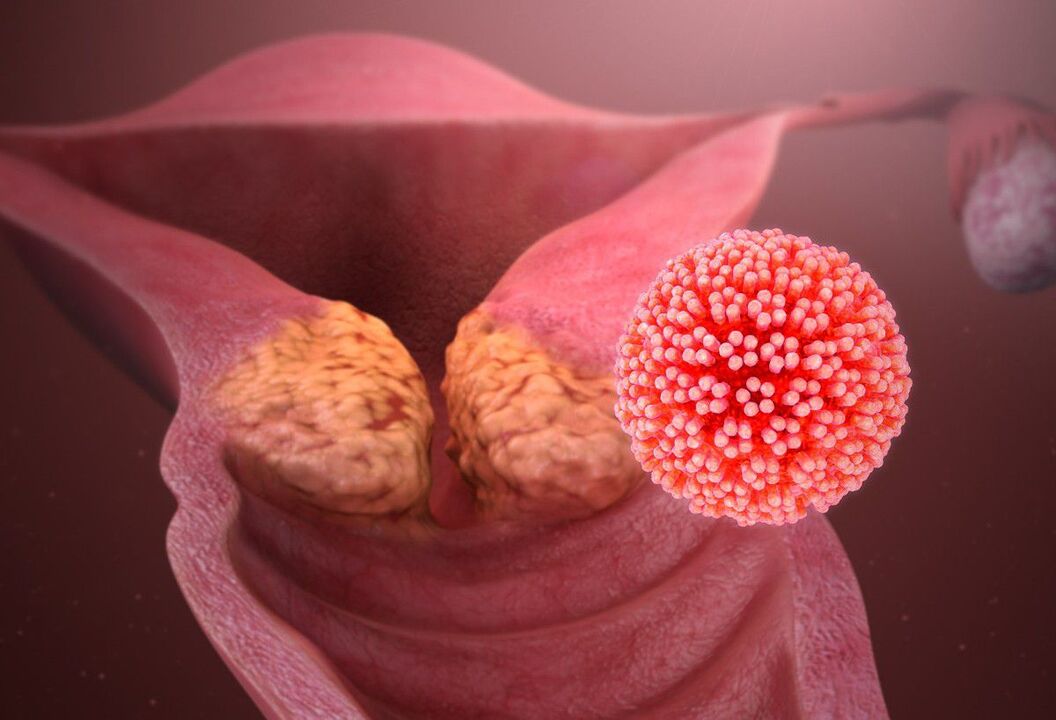
diagnosis
If papillomas form on the body, face, or genitals, you should see a dermatologist. This will make it possible not only to diagnose infection with human papillomavirus at an early stage, but also to take measures to prevent the formation of new elements and to observe changes in existing elements.
It is especially important not to hesitate to consult a doctor if there are any signs of growth, papilloma discoloration, an unpleasant odor, or pain in the area of its localization.
First of all, the doctor performs a dermatoscopy, that is, an examination of the neoplasia with a special enlarger. This makes it possible to determine their nature and identify dangerous signs that indicate a high probability of degeneration of a benign formation into a malignant formation, not to mention an formed cancer. Recognized at an early stage of development, they can be successfully treated and have a favorable prognosis for the future.
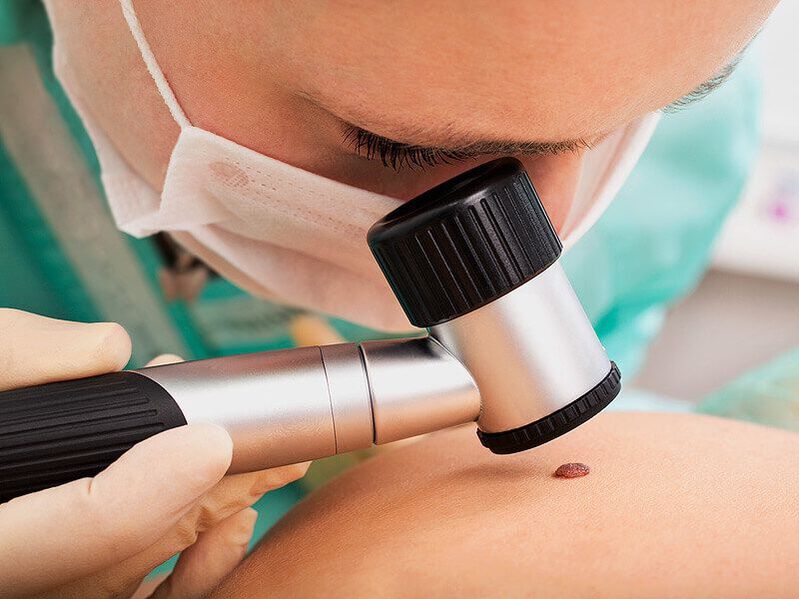
It is imperative that patients be tested for sexually transmitted diseases, especially if warts are found on the genital area. Even in such situations it is shown that women are advised by a gynecologist and men by a urologist. It is important to diagnose the presence of a human papillomavirus lesion of the cervix, urethra, etc. and, if necessary, to prescribe appropriate treatment.
To confirm papillomatous infection, patients are usually assigned a PCR analysis. With its help, it is possible not only to confirm or deny infection with the human papillomavirus, but also to accurately determine the strains.
Treatment and removal of papillomas
Treatment of human papillomavirus infection is always complex. Of course, you can simply remove the offending papilloma, but in this case there is a great risk that a new one or even several will soon form in its place. Since the main reason for the formation of papillomas is a decrease in the body's defenses, which allow the HPV dormant in the body to become active, patients with papillomatosis are first prescribed drug therapy. This includes taking immunomodulators and antivirals. In the case of extensive skin and mucous membrane lesions with papillomas, cytostatics can also be prescribed. However, they are taken under medical supervision as they can cause serious side effects.
If a patient is diagnosed with concomitant infections or diseases, he must be prescribed treatment appropriate to the situation, sometimes it is necessary to additionally visit a specialized specialist and undergo therapy under his supervision.

Warts of all kinds are subject to mandatory removal, as are papillomas, which are often injured and inflamed. In other cases, removal is done at the patient's request. However, it is possible to eliminate the visible manifestations of HPV infection only after the end of treatment of concomitant diseases, if any, and against the background of continuing antiviral therapy.
In general, all modern methods of destroying or removing papillomas can be divided into 2 large groups:
- chemical - consists in the use of various chemical compounds to remove papillomas, including trichloroacetic acid and dermatological preparations;
- physical - involves the removal of papillomas through surgery using electrocoagulation, cryodestruction, laser, radio wave, or plasma coagulation.
After removing the papilloma one way or another, it is important to use the topical agents prescribed by the doctor to speed healing and eliminate the risk of infection.
The success of the treatment, and especially the removal of papillomas, depends on the strength of the immune system. Under normal conditions, HPV is suppressed or even completely destroyed in 90% of cases within 2 years from the time of infection. However, this is not a guarantee that there is no risk of re-infection or the formation of new papillomas. If immunity is reduced due to the action of certain factors, papillomatosis becomes chronic, regularly leads to relapses, and can lead to serious complications.
To prevent infection with dangerous HPV strains and the development of serious complications, vaccination is recommended, especially for girls between 9 and 25 years of age.
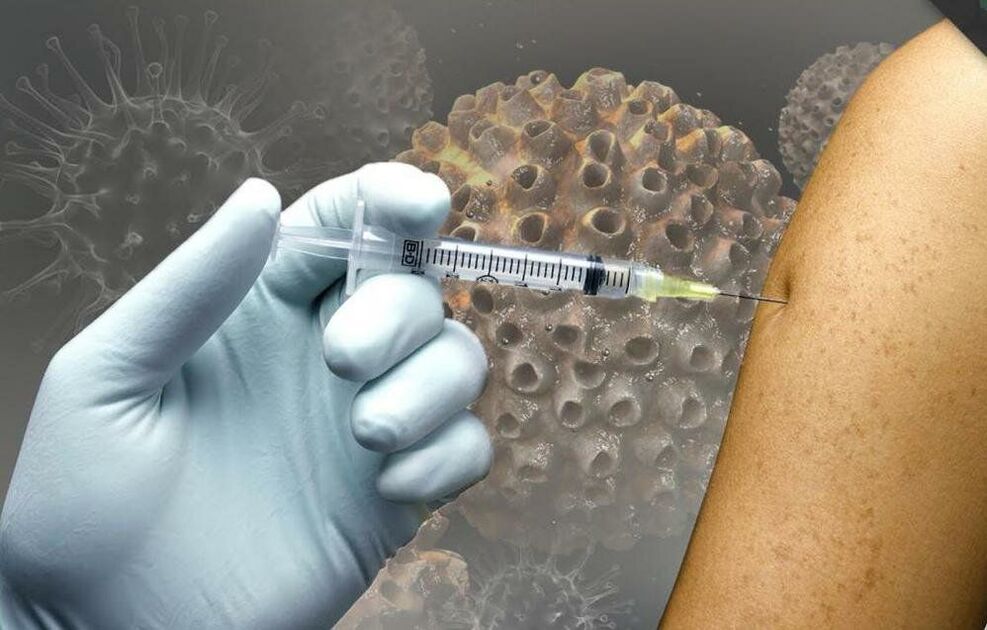
Surgical removal of papillomas
The essence of the method is to remove the neoplasm with a scalpel, which is associated with the formation of scars and an increase in healing time. Therefore, it is only used when there is a need to remove a large papilloma or a histological examination is required, as it is believed that malignant cells will form in it.
The procedure is performed under local anesthesia, which makes it painless. The doctor removes the neoplasm himself with a scalpel and grasps the surrounding healthy tissue. This is necessary to eliminate the risk of papilloma re-formation in the same place. If it has a leg, it is dissected with surgical scissors and an electrocoagulator is used to "seal" the blood vessel that feeds the neoplasm. The remaining wound is sutured, treated with an antiseptic and covered with a sterile bandage.
Surgical removal of papillomas is now mainly carried out if the formation of cancer cells is suspected.
Cryodestruction
The procedure involves the use of low temperatures to destroy papilloma cells. This is realized through the use of liquid nitrogen, the temperature of which is -196 ° C. The essence of the procedure is to use a special nozzle or to touch the papilloma with a cotton swab dipped in liquid nitrogen. Under its action, the water contained in the cells immediately turns into ice crystals, which destroy them from within. The procedure is performed under or without local anesthesia, as the exposure time to liquid nitrogen does not exceed 5-20 seconds.
The complexity of the method lies in the choice of the correct exposure time in order to remove the papilloma in its full depth and not to damage healthy tissue, which leads to scarring.
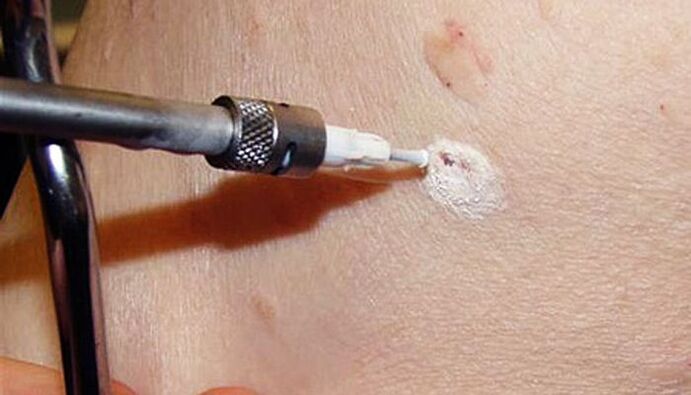
Immediately after the treatment with liquid nitrogen, a white spot forms on the site of the papilloma. Then a small bubble with transparent or pink-colored fluid content forms on it and the surrounding skin turns red and may swell a little. This can be accompanied by mild discomfort in the form of a burning sensation or tingling sensation.
After 3-4 days, the blister bursts and a crust forms in its place, which itself disappears after a few days, revealing healthy young skin. In no case should you puncture the bladder on your own, injure it or the crust in any other way.
Cauterization of papillomas with liquid nitrogen is possible only in cases when the possibility of the formation of malignant cells in them is completely excluded. This method is most commonly used to remove papillomas and genital warts on:
- Centuries;
- Face;
- small joints;
- Genitals.
Removal of papillomas with a laser
The removal of papillomas with a laser is only possible if their malignancy has been completely ruled out. The procedure is performed under local anesthesia and consists in the evaporation of moisture in papilloma cells with the thermal energy of a laser. A focused laser beam is thus directed onto the neoplasm. The exposure time must not exceed 1 minute.
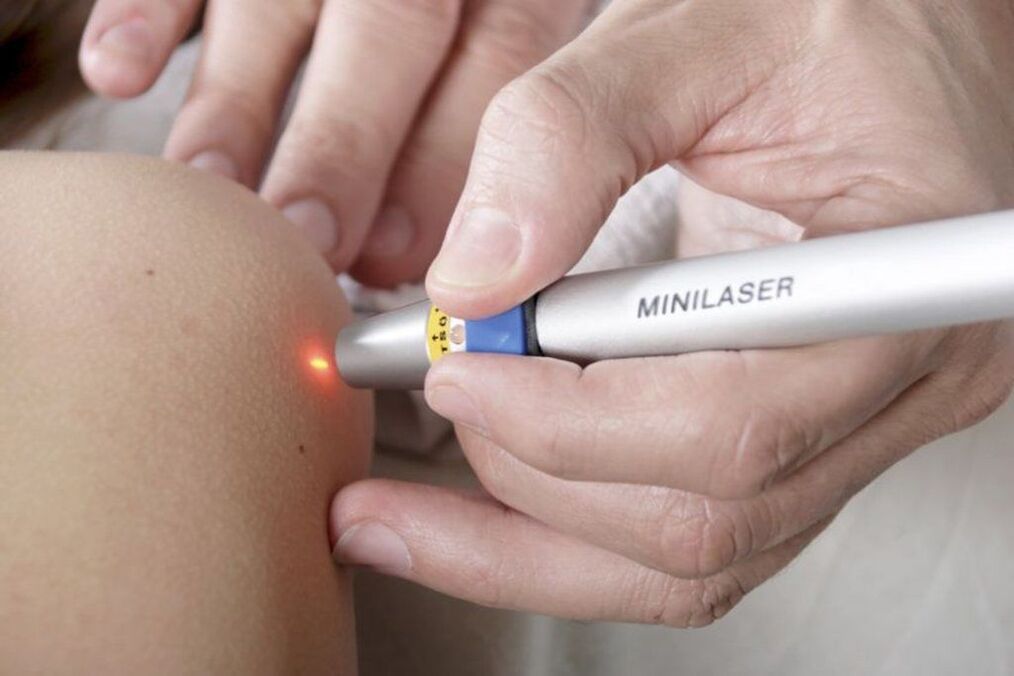
This will cause a crust to form on the site of the papilloma, and the skin around it will turn red and swell up. The crust disappears by itself within a week. It must not be soaked and steamed for 3 days, torn off and injured, as this is fraught with scars. In addition, it is worth protecting the treatment area from sunlight within 2 weeks after removing the papilloma. Otherwise, there is a high possibility of hyperpigmentation of this area.
When removing papillomas on the face with a laser, do not apply decorative cosmetics to the affected area until it is completely cured.
After the crust falls off, healthy pink skin is exposed, which gradually takes on a normal shade. This is the main benefit of laser papilloma removal because it eliminates scars and scars. They can only form if large neoplasms are removed and rules of care are violated in the postoperative period. In addition, laser removal completely eliminates the risk of wound infection and is an absolutely bloodless method, since under the influence of thermal energy there is immediate coagulation of small blood vessels.
With the help of a laser, papillomas are mainly removed on:
- Hands;
- Legs and feet;
- Face;
- Centuries;
- Neck;
- Genitals.
The laser is the only reliable way to remove plantar warts because their roots can penetrate 1 cm or more into the tissue.
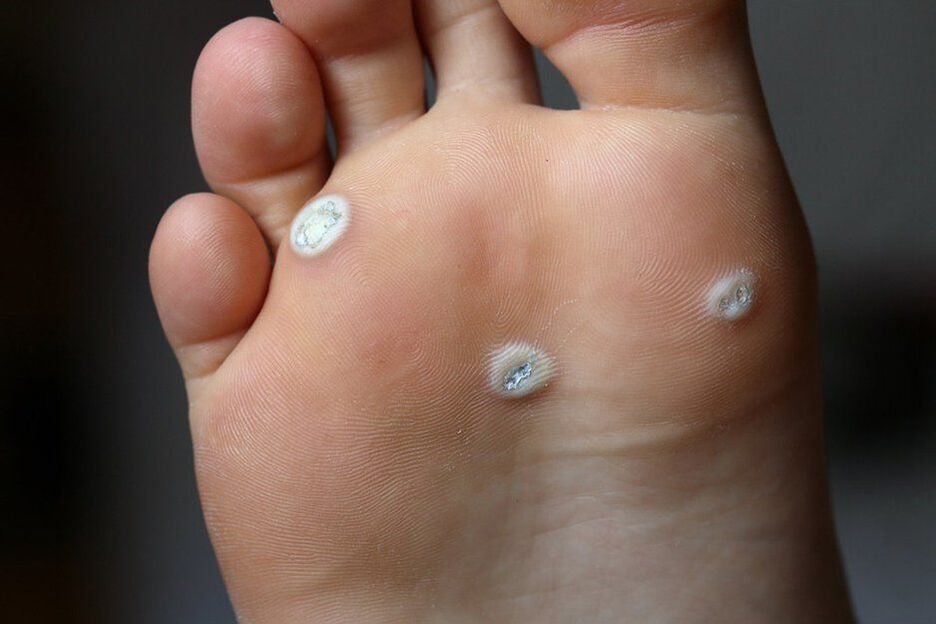
Electrocoagulation of papillomas
The essence of the method is to remove papillomas with an electric current. With a special device, the so-called electrocoagulator, the doctor records the papilloma and cuts it off in healthy tissue. In this case, bleeding is completely absent, since the thermal energy of the current is sufficient to coagulate small blood vessels. However, the procedure can be painful, especially if the growth needs to be removed from areas of the body with sensitive skin.
A crust also forms after electrocoagulation. And the entire recovery period lasts 7-10 days. After the crust falls off, the skin underneath should be protected from damage and ultraviolet radiation.
The method is used to remove papillomas in different parts of the body. In addition, electrocoagulation can also be used in cases where a histological examination of a neoplasm and an accurate determination of its type is necessary. However, as in other cases, the result of the procedure depends entirely on the qualifications and experience of the doctor, because if the distance is not deep enough, the papilloma can form again in the same place.
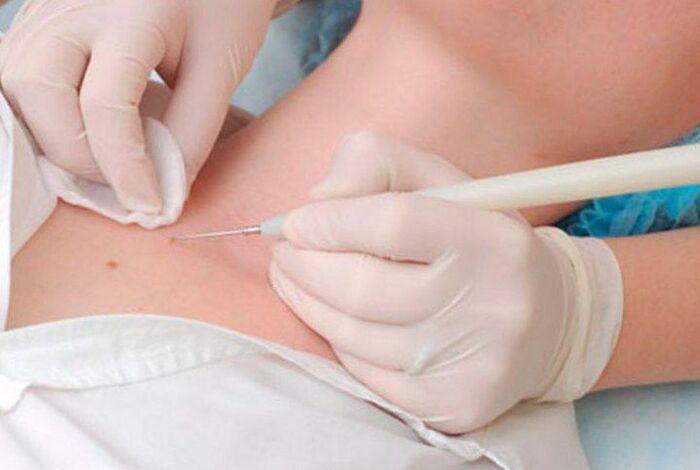
Radio wave surgery
This method is one of the most advanced in the removal of papillomas of any kind. A special device is used for this. At the same time, it has a lot in common with laser papilloma removal. The procedure is performed under local anesthesia and removal is done directly by the action of radio waves on the neoplasm. Thanks to them, it is possible to completely cut off the papilloma of any size and location, avoiding scarring.
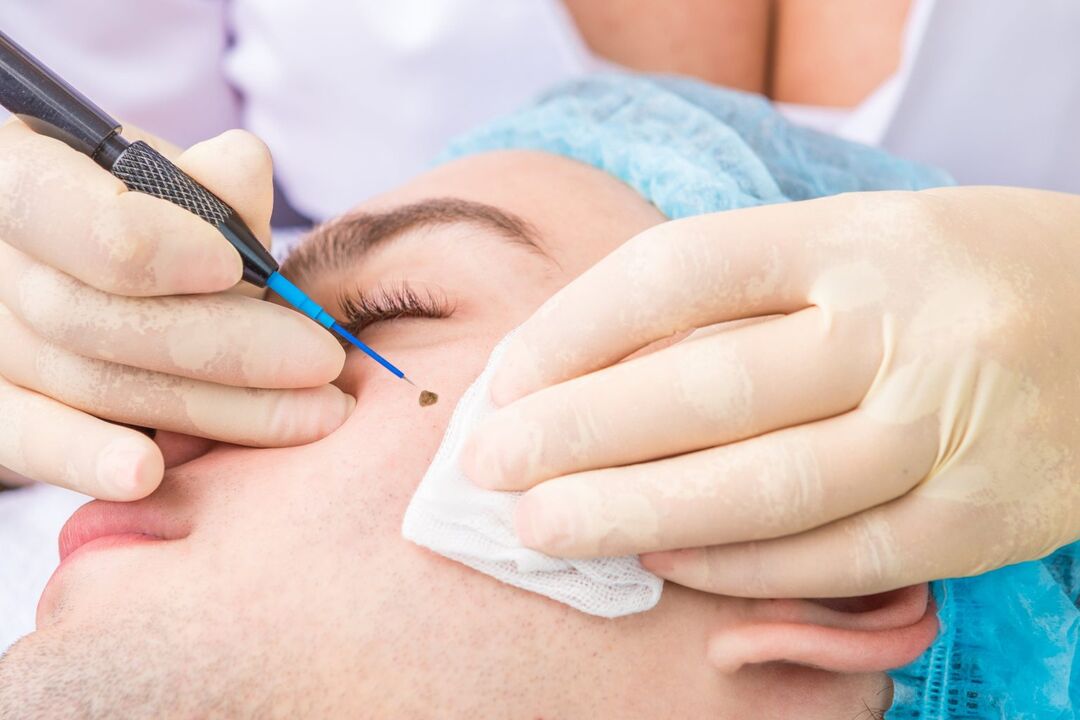
Chemical removal of papillomas
The method involves the regular application of special compounds to the papilloma, which destroy its cells, which leads to the subsequent disappearance of the neoplasm. However, extreme caution should be exercised when using such drugs so that the substance does not come into contact with healthy skin.

Thus, anyone can face the formation of papillomas. There is no effective prevention against HPV infection, and vaccines only protect against the most dangerous strains of the virus in terms of cancer risk. However, in most cases, they do not cause significant discomfort to a person, with the exception of genital warts and anus, which need to be removed. In any case, you can get rid of any papillomas quickly and effectively, but since it is impossible to completely destroy HPV in the body with drugs and there is always the risk of getting infected again or with a different strain, there is a possibility that the problem will come backappear. The only reliable way to minimize the chance of papilloma formation is to strengthen the immune system. And if they appear and present a cosmetic defect or affect a person's daily life, contact a dermatologist. The doctor will be able to accurately distinguish papillomas from other skin neoplasms and resolve this problem in a matter of minutes.

























